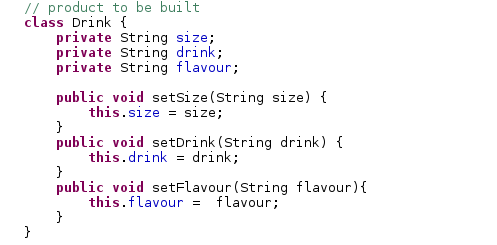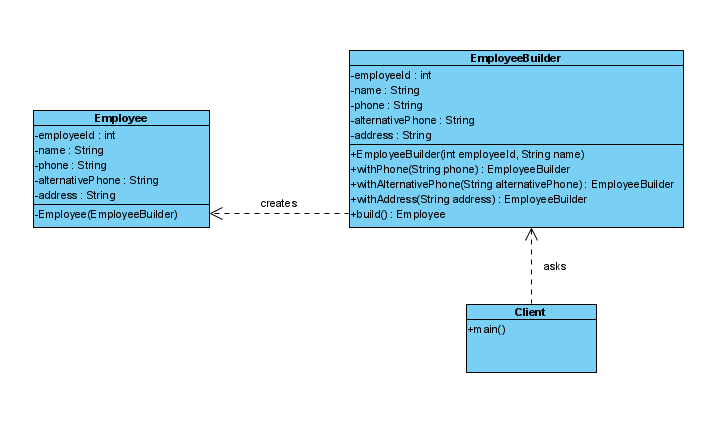
All getter, and NO setter to provde immutability Private final String lastName // required Private final String firstName // required
#PRODUCT BUILDER JAVA DOWNLOAD#
Visual c program for the implementation of resume builder system Ad download a free & perfect resume. The given solution uses an additional class UserBuilder which helps us in building desired User instance with all mandatory attributes and a combination of optional attributes, without losing the immutability. Features multiple resume templates (soon) The projects listed here are mostly advanced projects developed using java and many of these, but not all, use oracle 10g database. Lombok’s annotation is a useful technique to implement the builder pattern. Here, the builder pattern will help you to consume additional attributes while retaining the immutability of the User class. You choose any of both options, you lose something, right? One way is to create more constructors, and another is to lose the immutability and introduce setter methods. Still can manage? Now let’s introduce our sixth attribute i.e.
#PRODUCT BUILDER JAVA CODE#
Undoubtedly, the number of lines of code increases at least to double in the builder pattern, but the effort pays off in terms of design flexibility and much more readable code. It will look like this: public User (String firstName, String lastName, int age, String phone, String address) StringBuilder builder new StringBuilder('Temp') String data builder.append(1).

In normal practice, if we want to make an immutable User class, then we must pass all five information as parameters to the constructor. firstName, lastName, age, phone and address.

Now, let’s assume, our User object has the following 5 attributes i.e. Ideally and practically as well, once a User object is fully created, we will not want to change its state. In any user management module, the primary entity is User, let’s say. Let’s discuss a common problem in our application. And as I already said, the builder pattern helps us in creating immutable classes with a large set of state attributes.

Summary Public methods build public QueryProductDetailsParams. If you have any questions about it, let me remind you of the String class in Java. public static class extends Object Included in documentation by the annotations: Annotations.ProductDetails Builder that helps construct QueryProductDetailsParams.Product. We already know the benefits of immutability and immutable instances in an application. A fluent interface is normally implemented by using method cascading (or method chaining) as we see it in lambda expressions. Let’s start by giving a definition of builder pattern:īuilder pattern aims to “Separate the construction of a complex object from its representation so that the same construction process can create multiple different representations.”Ī builder pattern should be more like a fluent interface.


 0 kommentar(er)
0 kommentar(er)
